A New Home Studio
A New Home Studio
From Metal Box to Creative Sanctuary: I Quit my Storage Unit and Moved my Artwork into a Home Art Studio
by Anne Kupillas.
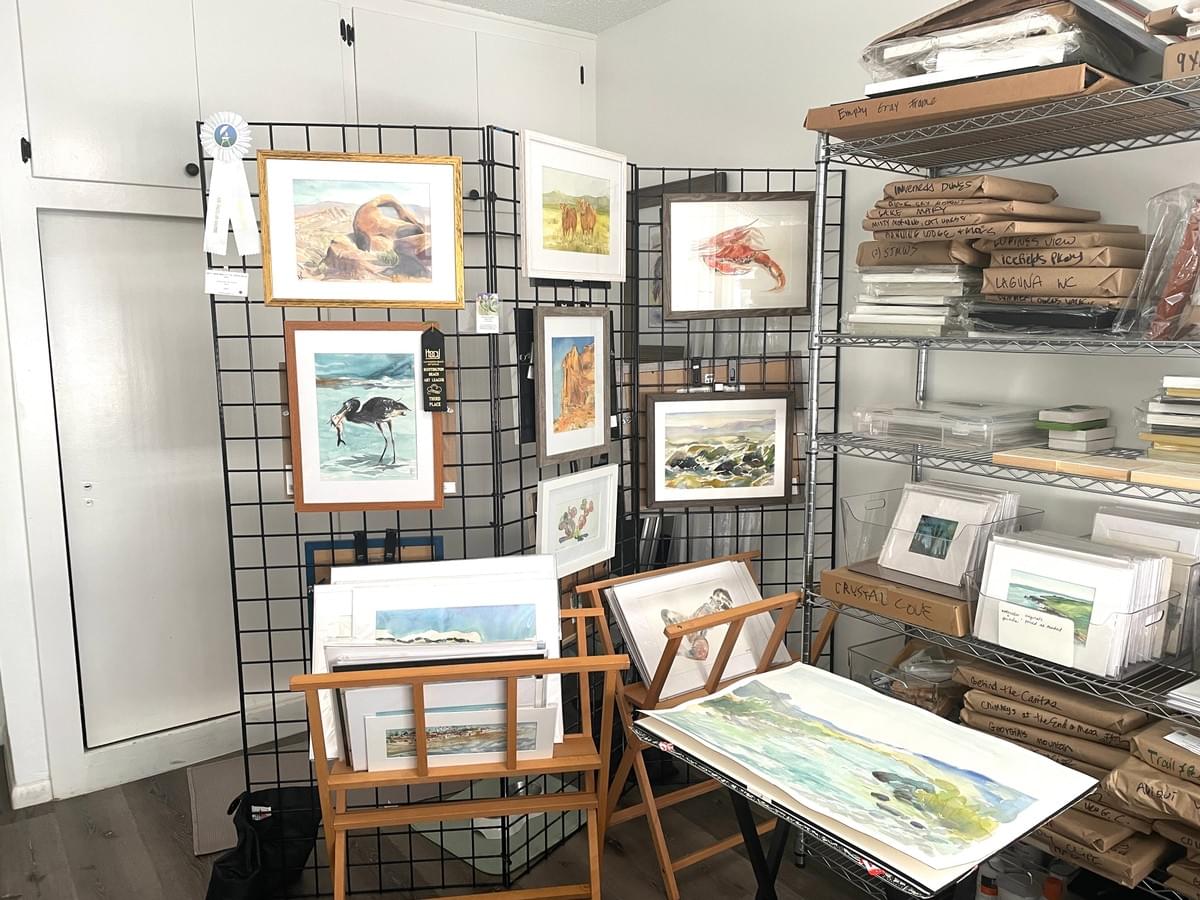
A sudden need to move house turned into the perfect opportunity to have a home studio (and to simultaneously close my storage unit). I decided to jump on this moment and I renteda larger space, incorporating a home studio into my primary living space.
Creating a studio in your home is a dream for many artists,myself included. For years I’ve fantasized of a Frank Lloyd Wright-style A-Frame in the woods, a sprawling compound with paintable views, a farm in the countryside with a summerhouse converted into an art studio in the fields, and other dreamy situations. The one I ended up with (the one based in reality) isn’t exactly Falling Water. It’s a secondbedroom in a 1,400-square foot apartment. Though not an ideal studio it does have many pros, which I weighed with the cons for about 10 minutes before signing the lease!
The biggest positive is that it’s a separate space that’s affordable, roomy and convenient.
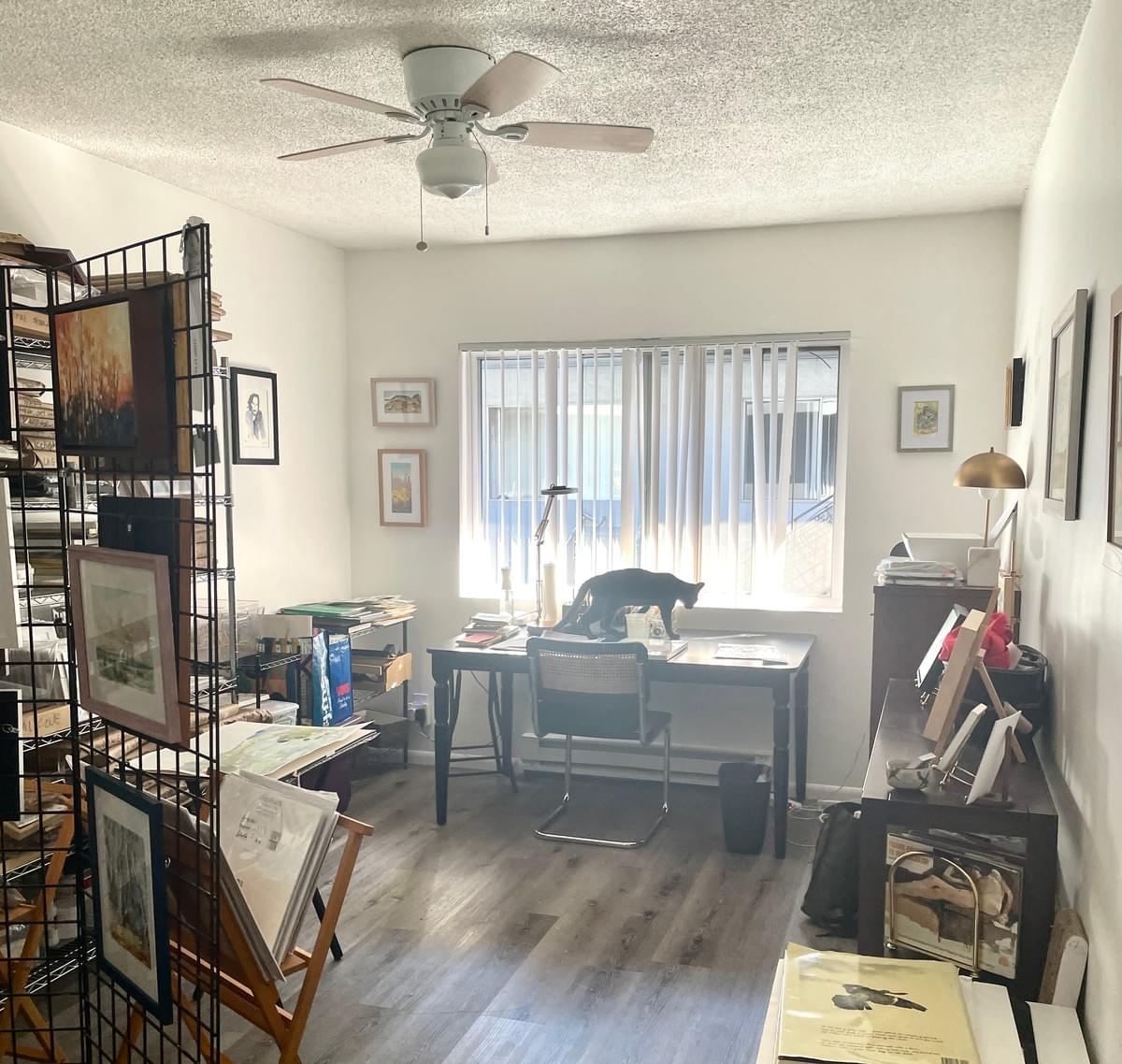
Other pros about this space:
- Natural Light. My friends and family wondered why I chose the larger bedroom as my studio and the smaller to sleep. I chose this room as my studio because of thenatural light. As someone who is inspired by the sunshine to create, the morning sun pouring in through the window was the deciding factor. I knew I would put my desk, actually a deep dining table (60” x 30”) in front of this large, practically wall-to-wall window where the sun would light it until noon and beyond.
-The space is large enough to have all the furniture I need in the space. The aforementioned big table/desk to create my paintings and teach with my camera set up, a set of wall storage shelves, a standing display grid for hanging frames, and some other furniture pieces, also a smaller table to mount and frame finished work, and to pack up artwork for mailing
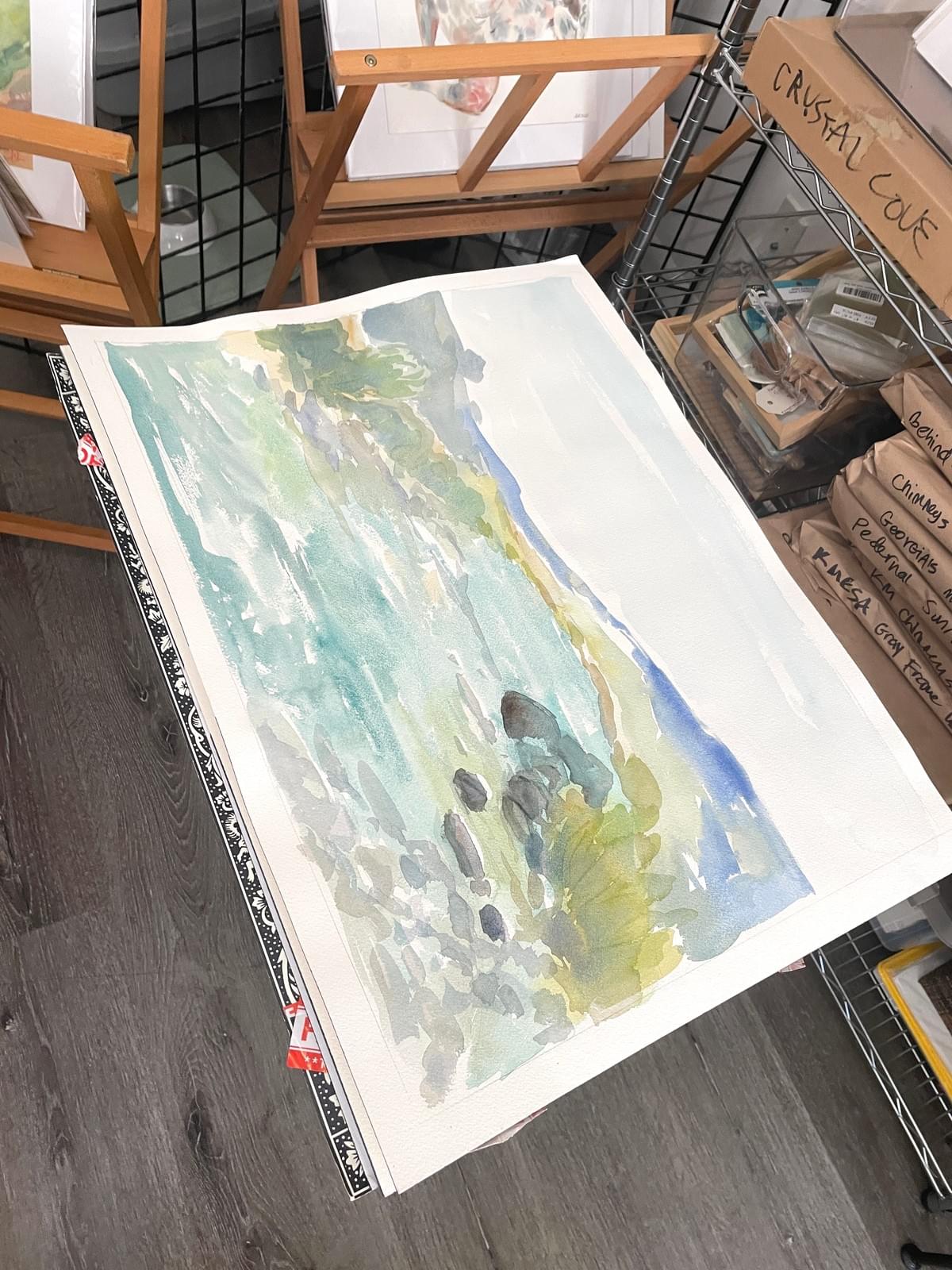
- A ceiling fan and ceiling lights were already installed, so the room, along with the natural light from the window, is usable as a studio both day and night.
- A built-in closet with sliding doors and overhead closet spaces hosts ample storage of extra supplies, I’m actually spoiled for how much storage room there is!
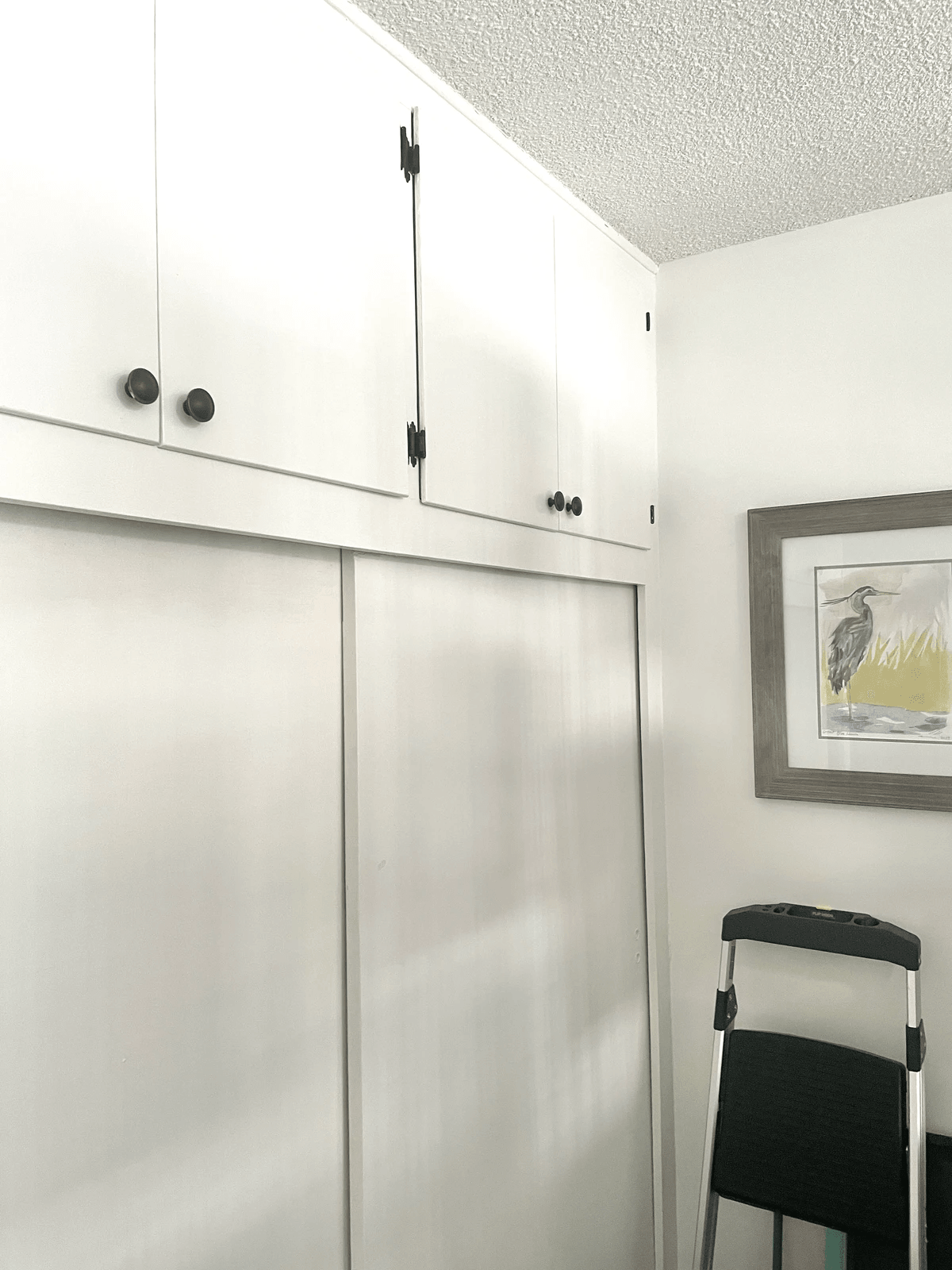
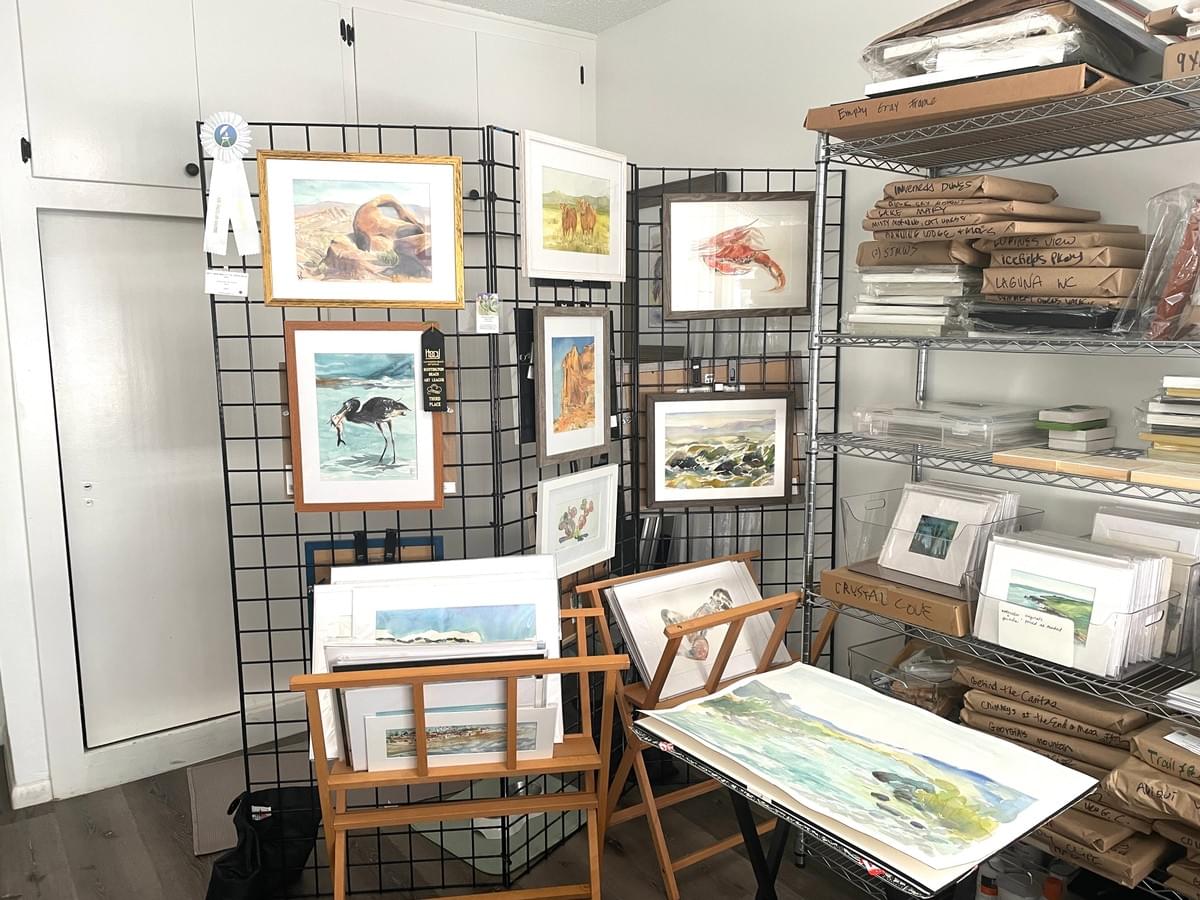
-Room to display my artwork. I put up my 3’x6’ grids in a zig-zag and use these to hang
many of my framed artwork. It’s amazing to be able to display the artwork for
visitors. However, I also use the grids to decide on what to display for
upcoming shows, and how to order the display visually. I used to do this either
on the floor or with Post Its on a piece of paper. So having these grids is so
helpful!
-Three full display walls – two of which I use for hanging my own artwork and a
photography area, the third is filled with the metal wall-to-ceiling open racks which I moved over from my storage unit. I use these racks to hold clear containers with matted prints and wrapped framed artwork. Everything I use regularly is at my fingertips – and I can see them. Necessary for someone who is a visual organizer.
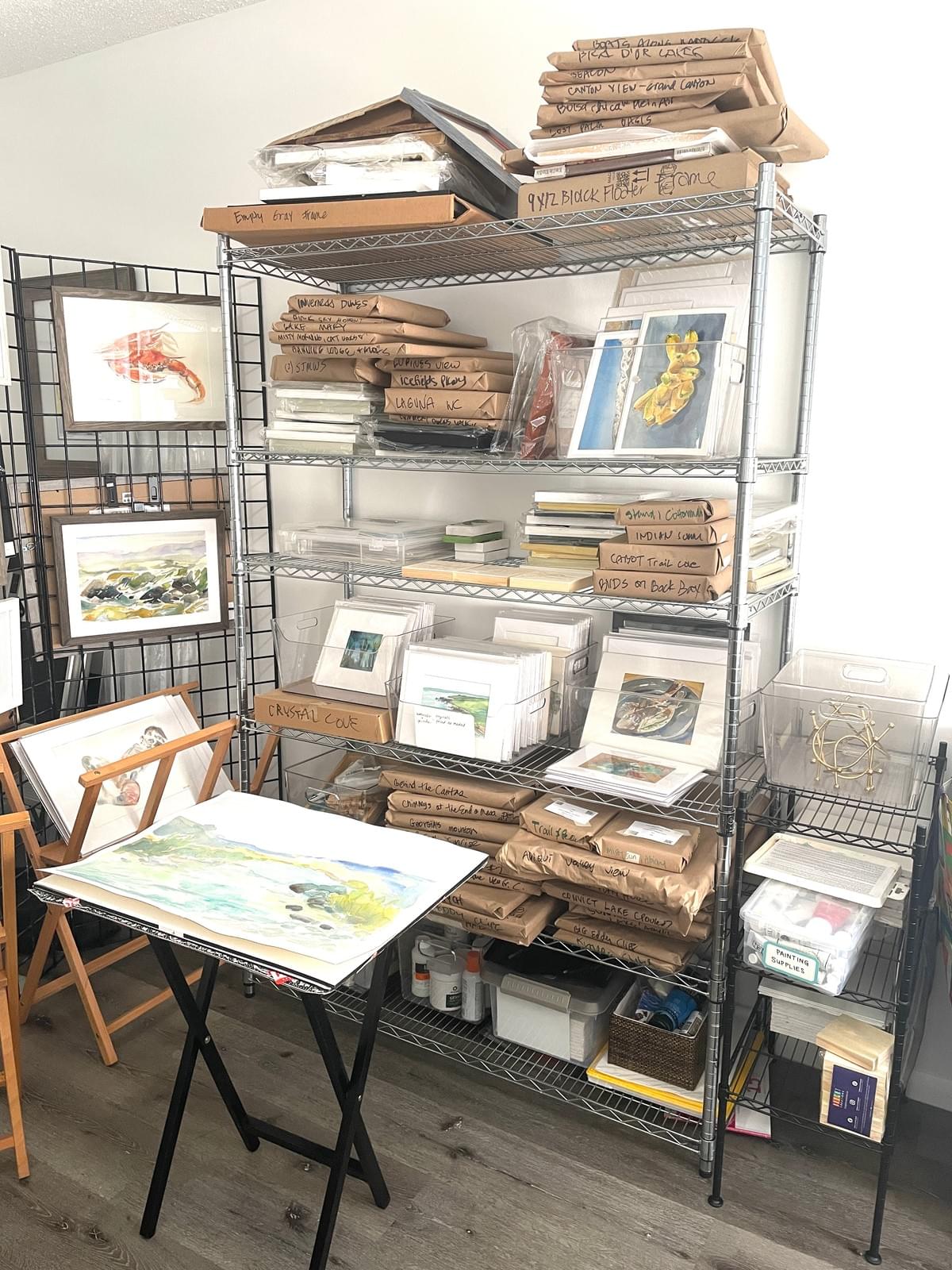
- Privacy. There’s a door I can close to keep my cats out. I have also put in a gate so
they can see through it while I’m working - in wet media especially (no cat paw
prints in the art!) - and not feel completely left out. The flip side is that I can close the door to a messy studio and works in progress, and it doesn’t spill into the rest of my life. No more artwork in progress in the living room and dining room; having a dedicated space just for artwork and teaching is the best!
Moonshine in the studio, before I installed the gate!
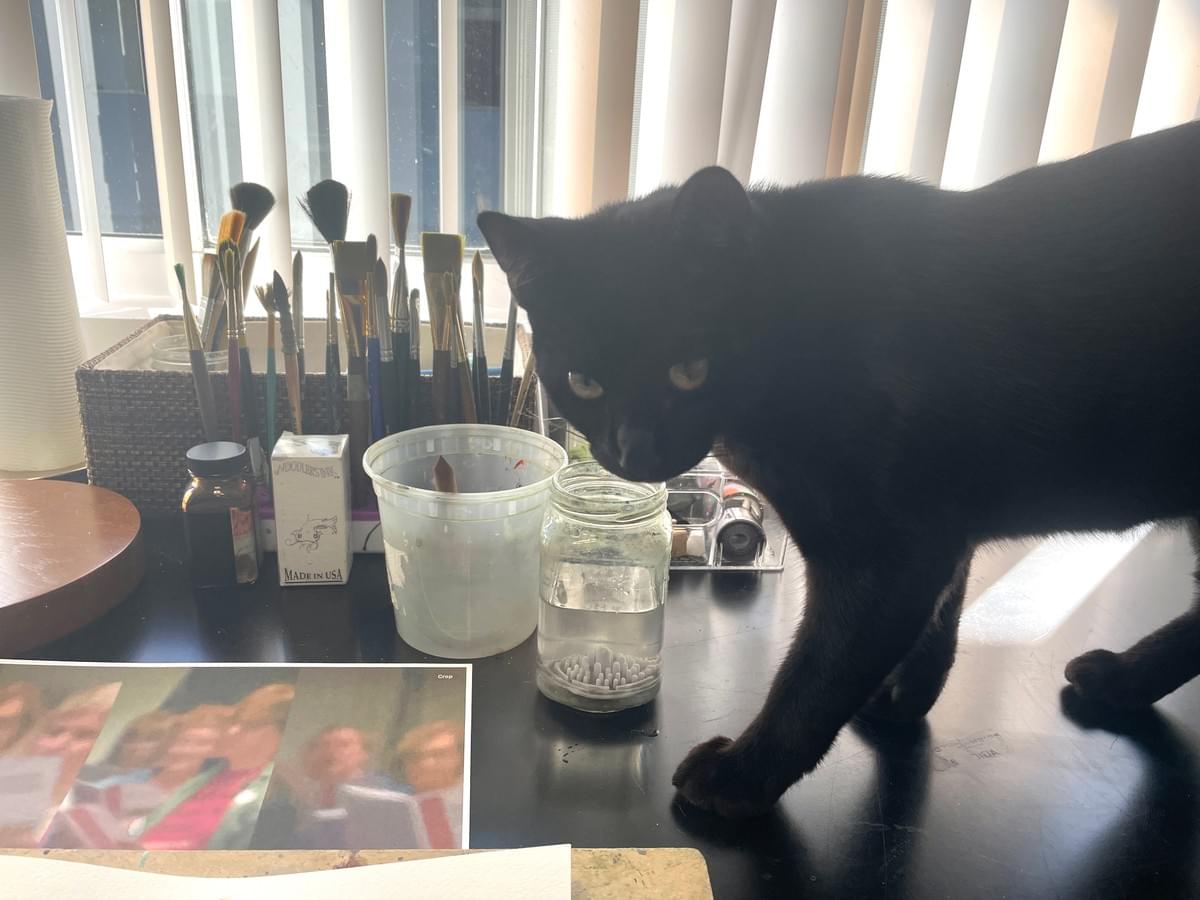

Honey in the racks, making sure all is in order.
There were just a few Cons: -The space lacks a sink and running water, which is important for creating water media.
-No separate entrance, so I can only host private events – there’s no public entrance.Basically, it’s accessible by invitation only and through my living areas.
Overall, my new home studio provides a space for creating, with naturallight and the comfort of home. For artists considering this move, I would recommend it. Here is what to consider.
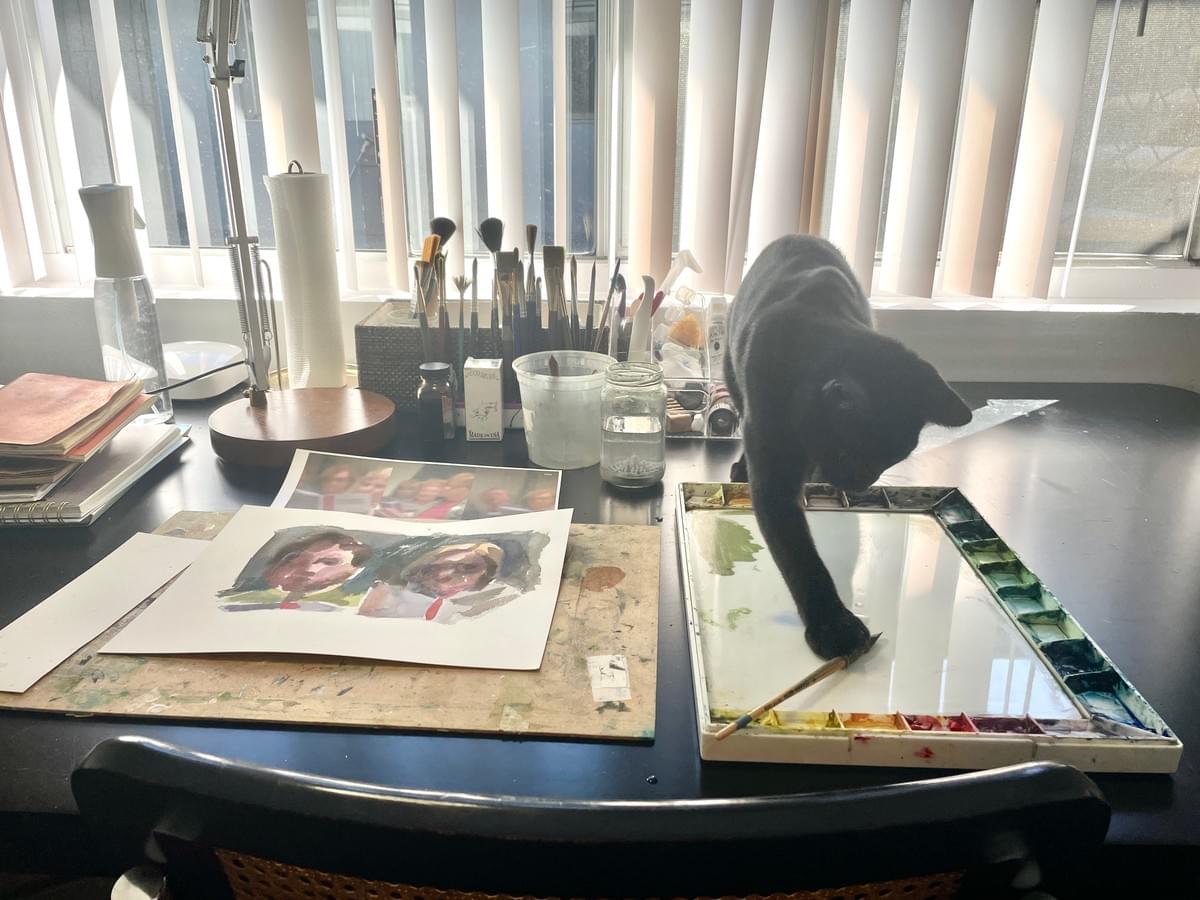
Space Needs. Make sure to measure your space and consider how you will fit your furniture, art and other things you may need, such as a standing easel, a lightbox or photo wall. Pro Tip: Design for the process. Plan zones to fit the workflow. In my space, the front of the studio gets the natural morning light so I paint there, while the darker back of the studio hosts storage.
Other practical needs, such as lighting, electrical outlets and windows that open for ventilation. Noise vs quiet is also something to think about, depending on what gets your creative juices flowing.
Budget. Will the ROI justify a higher rent or bigger mortgage? My closing my storage unit offset the increased rent for a two-bedroom. Also, I knew I could host private viewings and tutoring, and create more income in that way.
Before packing, consider creating your dream workspace and use your time & resources wisely.
Purge. It's time to let go of what no longer serves you, the artist. “Tough love it” and dispose of old paints, miscellaneous tools you don’t use, and unfinished projects you know you’ll never revisit. I personally recycled (as in binned) over 200 pieces of painted paper, from my earliest days learning watercolor. Parting with them felt good (after all, I have photos of most of them). A lighter load meant less to organize later and helped move me forward as an artist.
Invest in smart storage. A home studio needs organization. I use clear hard plastic totes with lids to protect supplies. I use acid-free brown kraft packing paper for wrapping framed paintings and clear cello sealable bags to prevent damage to matted artwork.
Look to the walls when floor or closet space is limited (or if you just have a LOT of art, like me). Vertical storage is idea. Get creative, artists! Pegboard systems can hang tools, floating shelves and repurposed furniture like my console-style bookcase hold books AND display artwork on the top shelf. Wall-mount or floor storage racks keeo your canvases organized, amongst other things. Pro Tip: Write the title of the artwork on the top AND the outside edge of the packages, that way you’ll know at a glance what’s inside.
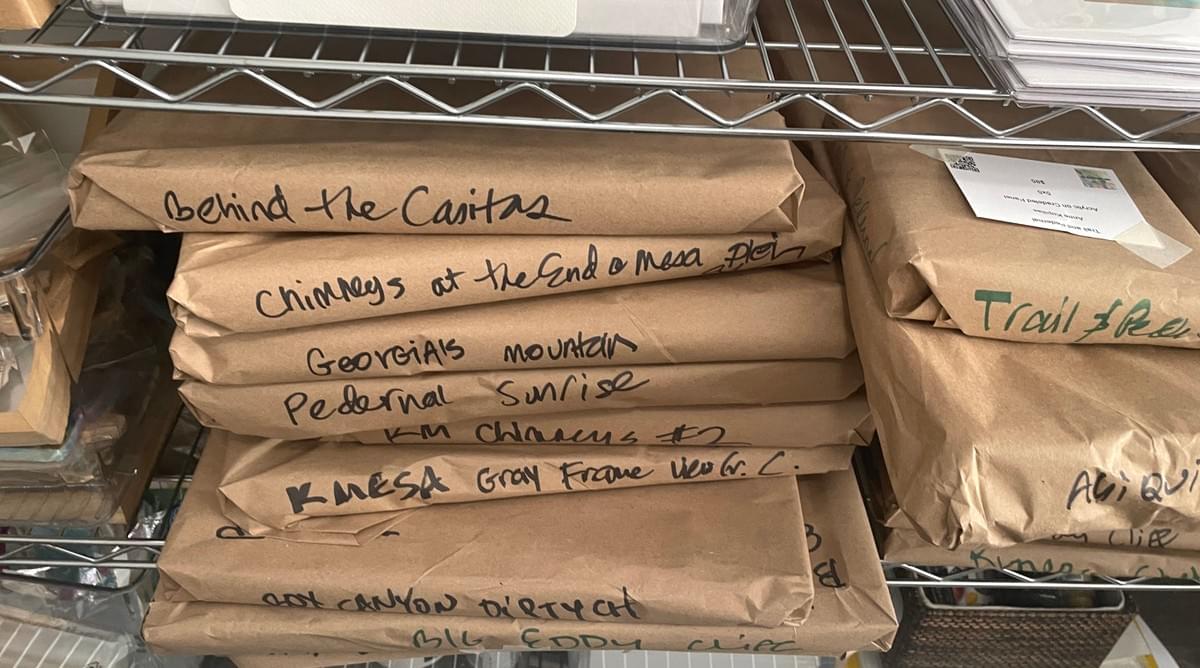
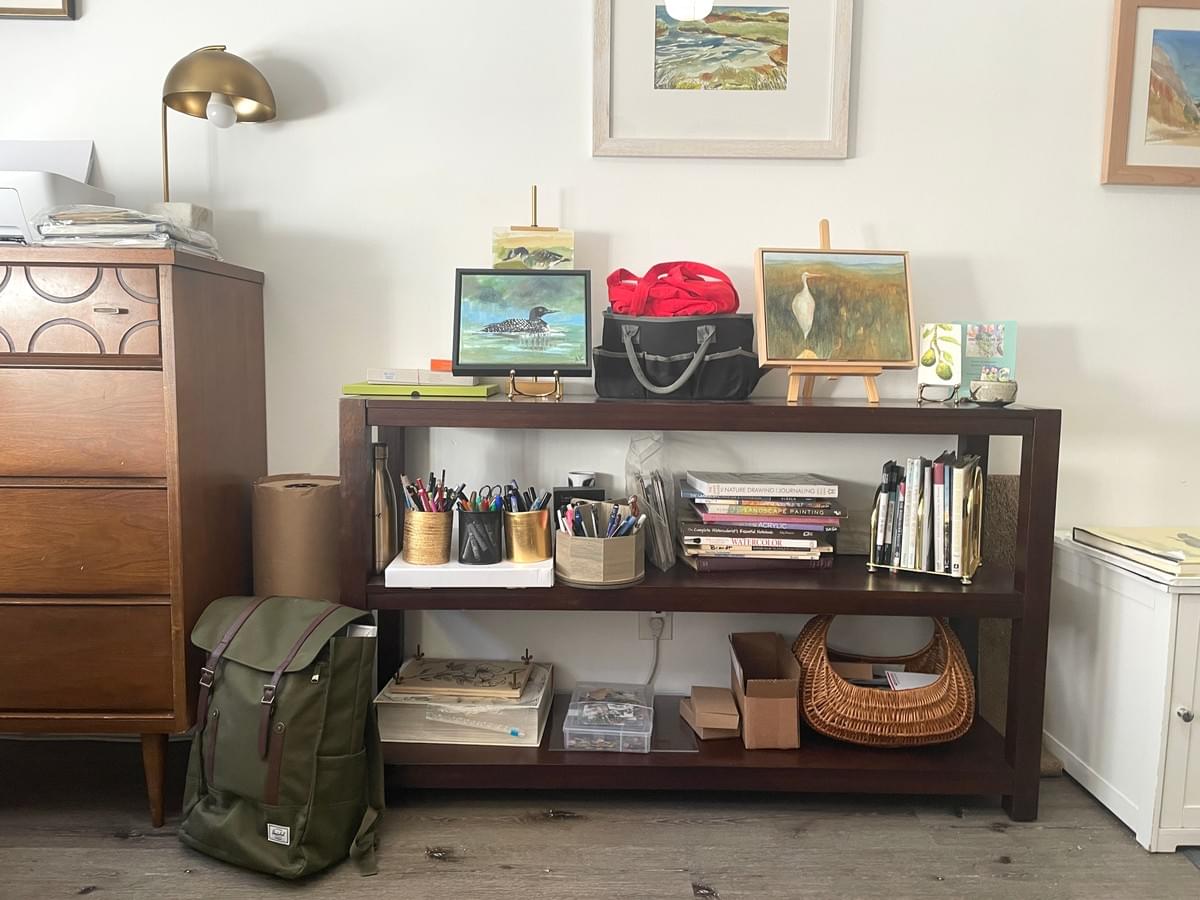
Repurpose old furniture. A vintage dresser and low console-style bookcase) were given a new life by using drawers for my printing needs like paper and pricing labels, shelves for books and supplies at the ready, and my printer and Alexa device sitting atop.
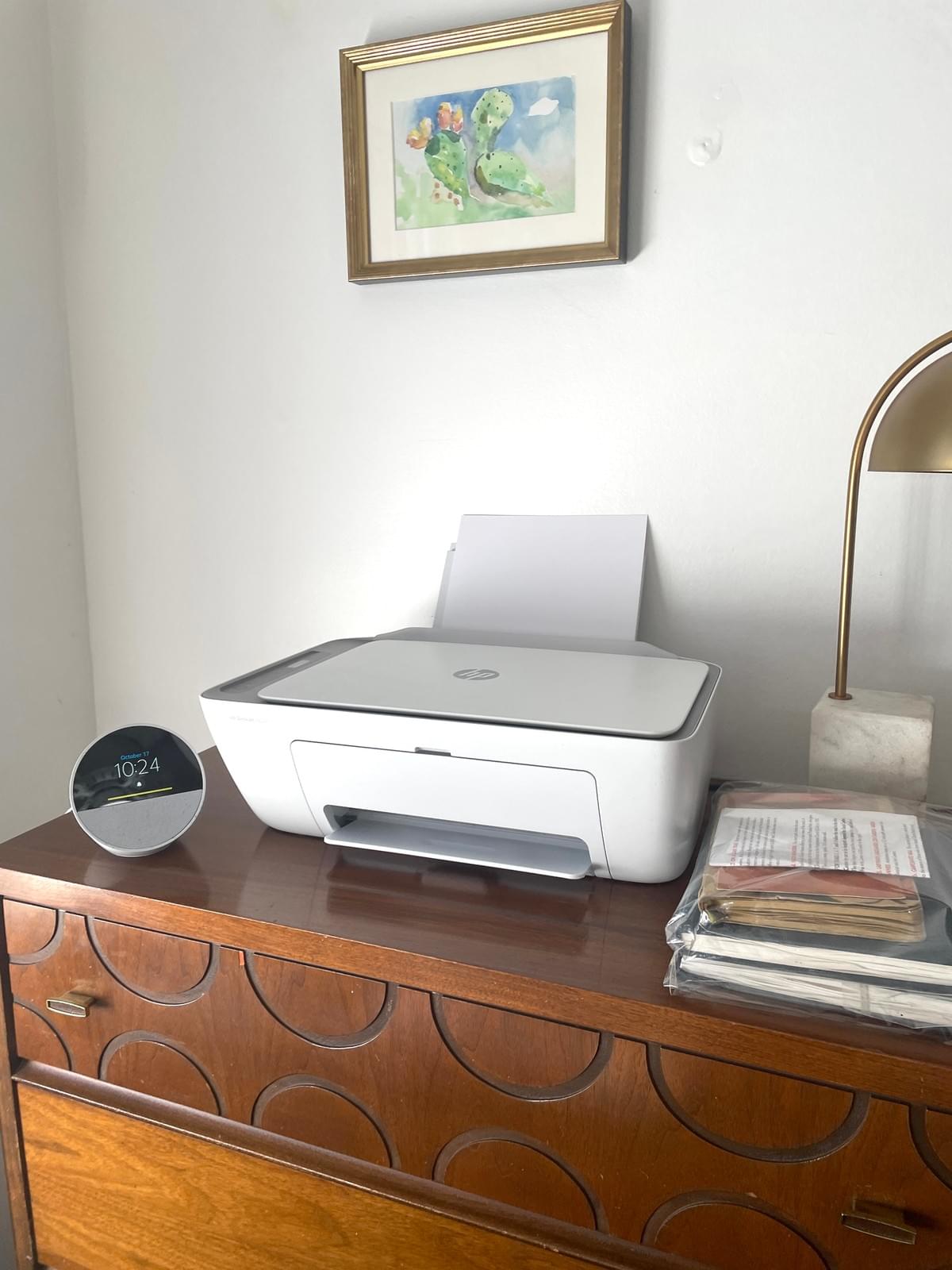
Maximize work surfaces. The work table is the heart of my studio. I invested $300 in a large 30x60” black dining table from Wayfair, to use as my worktable. It’s big enough to hold my video set up, task lighting, watercolor palette and at least two projects going at once. I can also teach a private lesson at it, and I keep my comfortable work chair AND a spare stool tucked under it. Those take up no space at all.
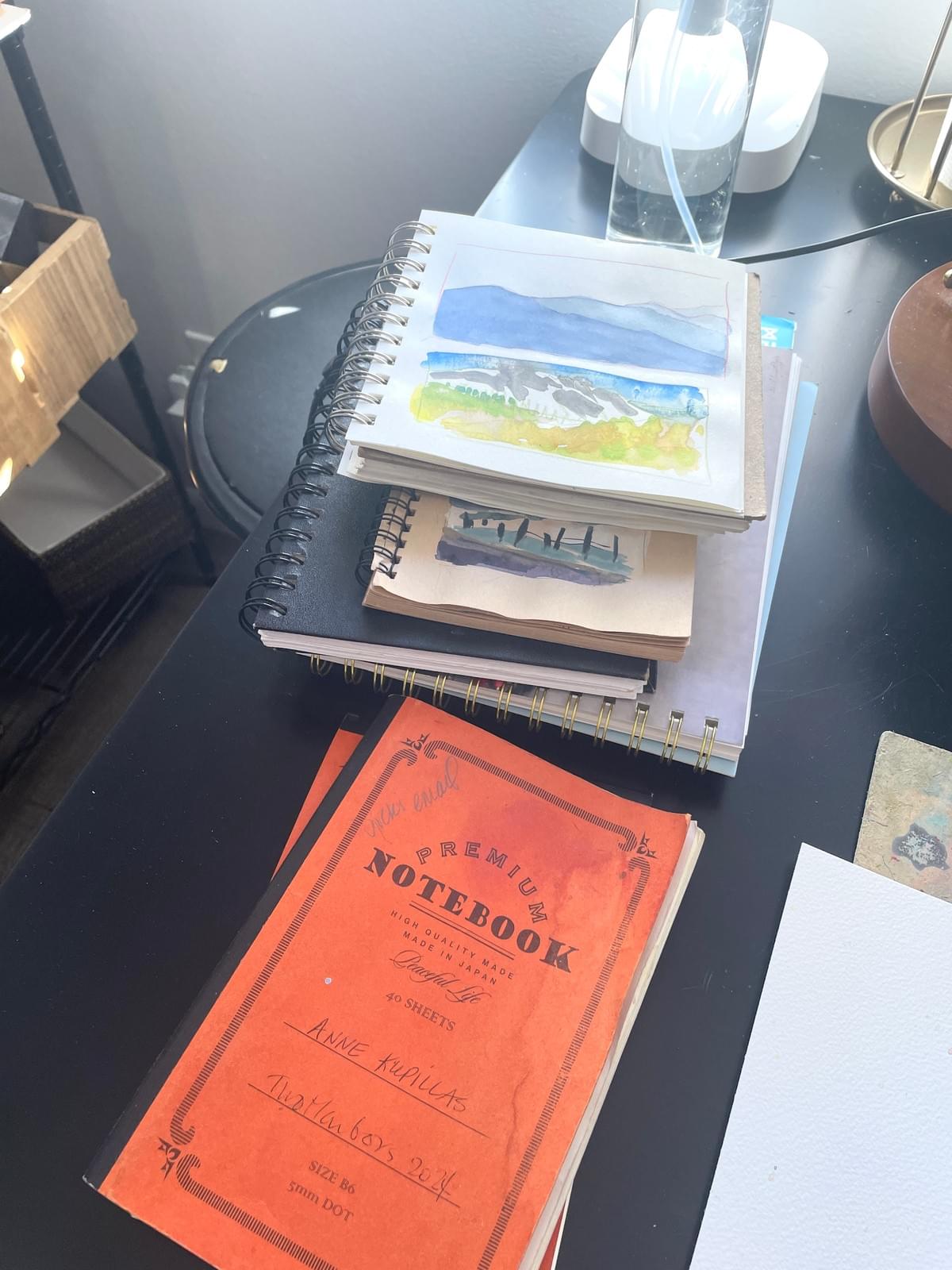
Employ a Rolling Cart. Use rolling utility carts to keep the most-used supplies handy if you lack drawers.
A New Beginning: Setting Up Your Home Studio
The real fun begins when an empty room is transformed into acreative hub. My advice? Make it a sanctuary.
Your home studio is more than just a workspace; it’s anextension of your home and thus of you, as an artist and as a person. Add some personal touches. Photos, moodboards and artwork can make the space feel meaningful and inspiring. A comfortable chair or small couch can create a cozy spot for sketching, pets or guests, and plants can add oxygen and color to your haven. I hung my favorite pieces of artwork, those which are NFS, all around the studio - looking at them makes me happy.
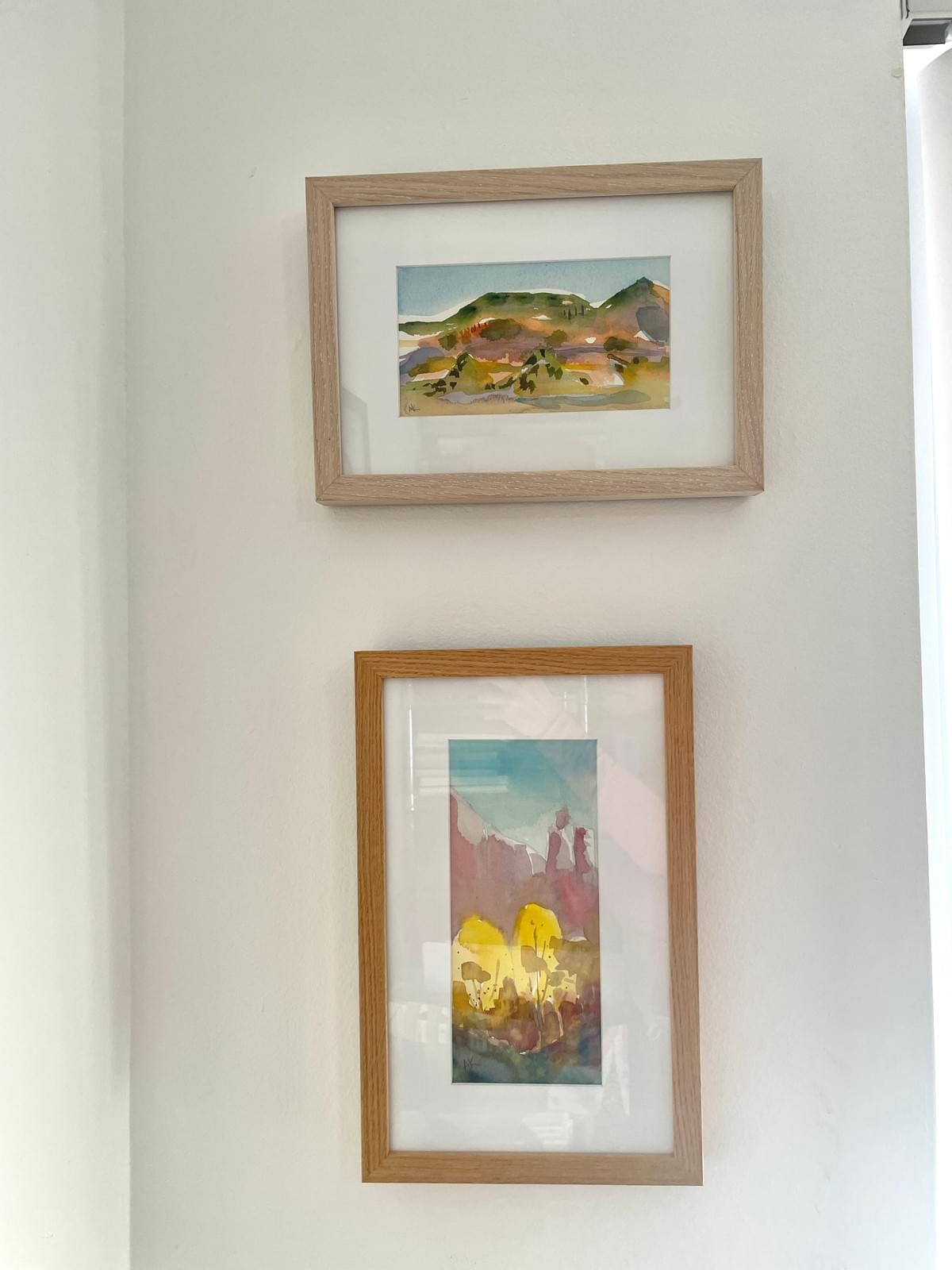
A New Creative Freedom
Packing up and closing my storage unit really allowed me to reflecton past projects and progress and what I learned is most of all, that I feel
more like an artist now that I have a dedicated space for my art practice. Having
my studio and storage is like working from home in complete freedom. I can
paint whenever inspiration strikes, leave a project out to dry, and be
surrounded by the things that fuel creativity. But having a home studio also makes
me feel like I’ve finally made it as a real working artist. Take that, Frank
Lloyd Wright. ;)
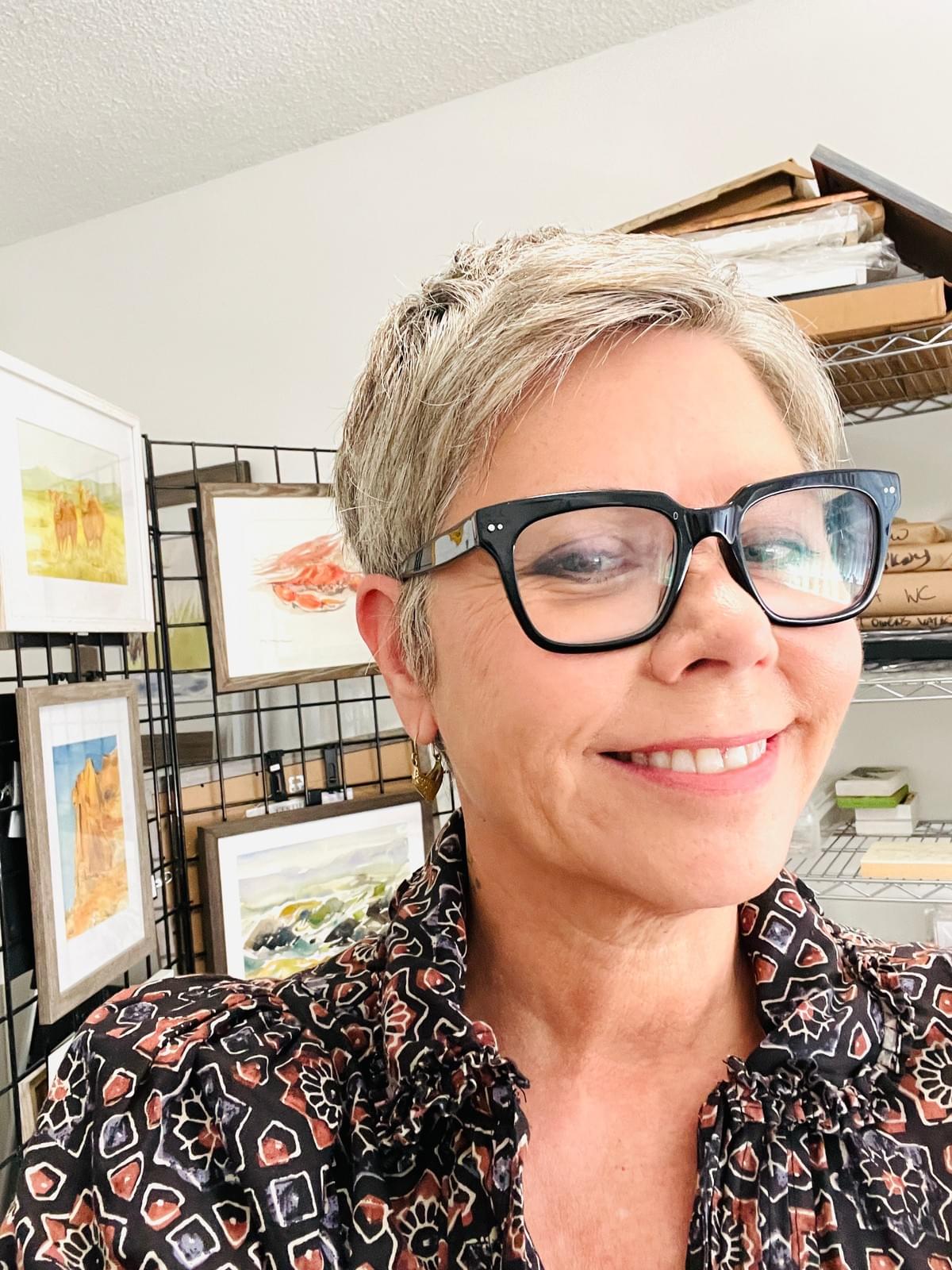
Please check out my other blogs, on art, painting, drawing, plein air, and life as an artist. Thanks for reading!